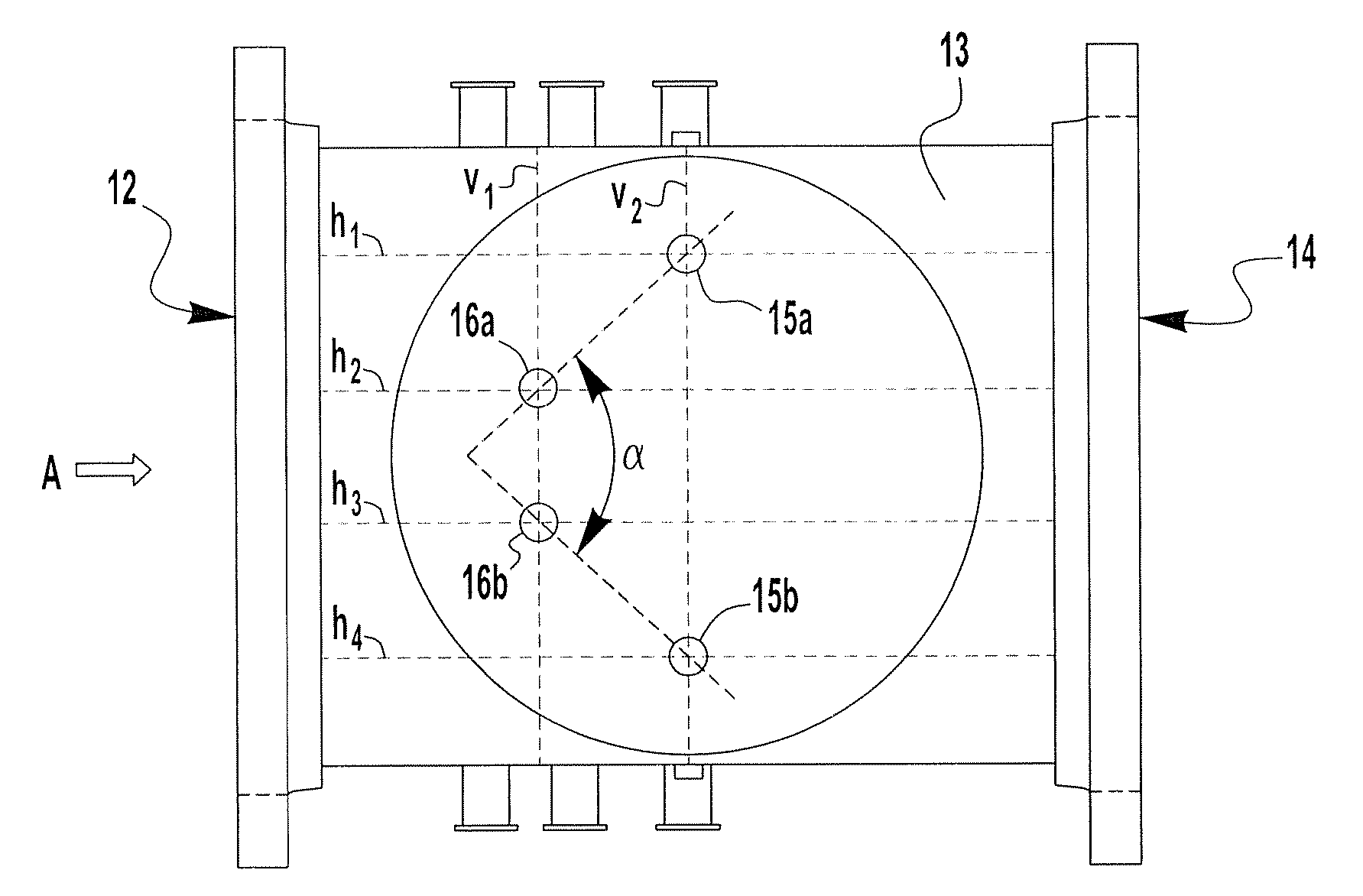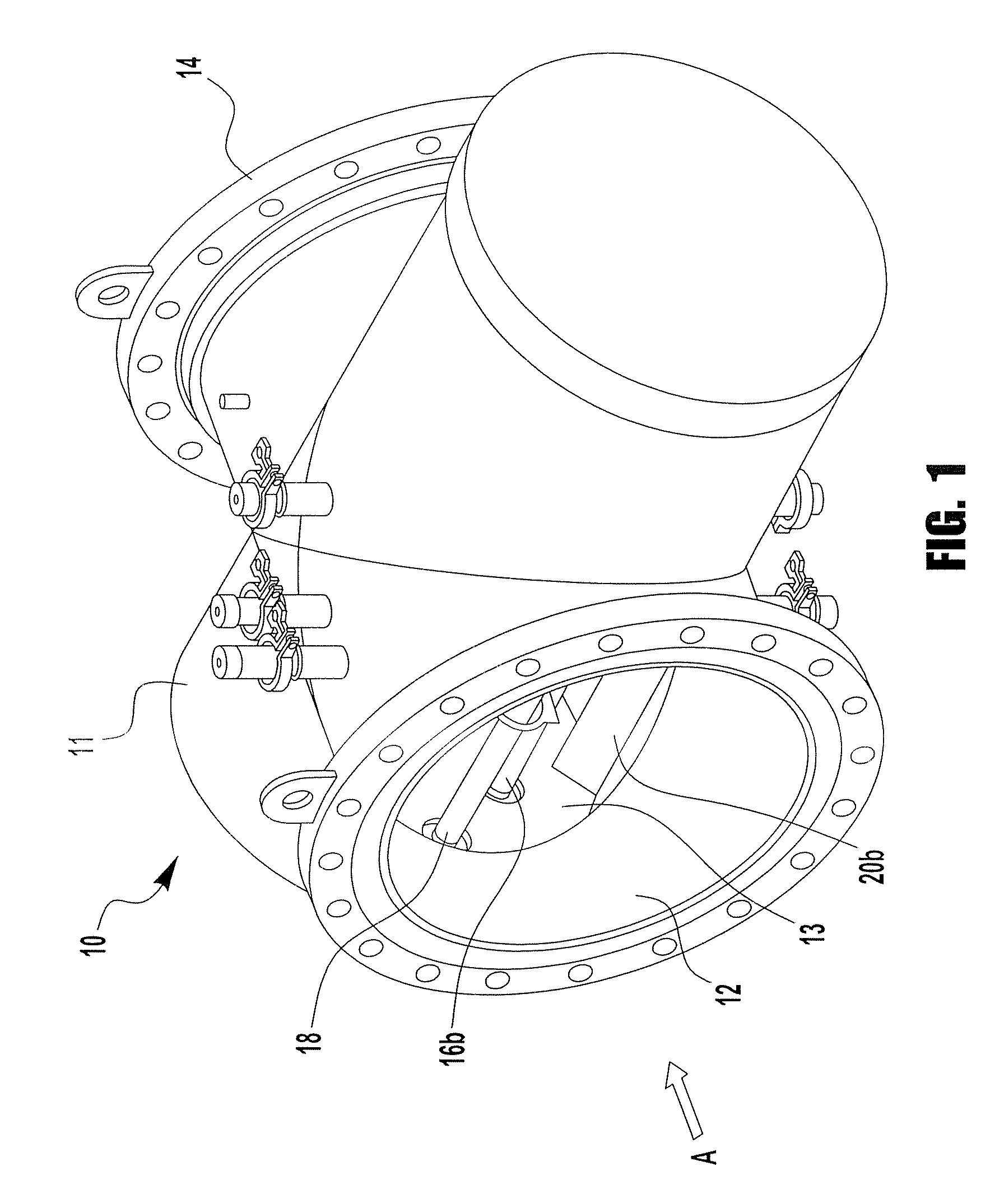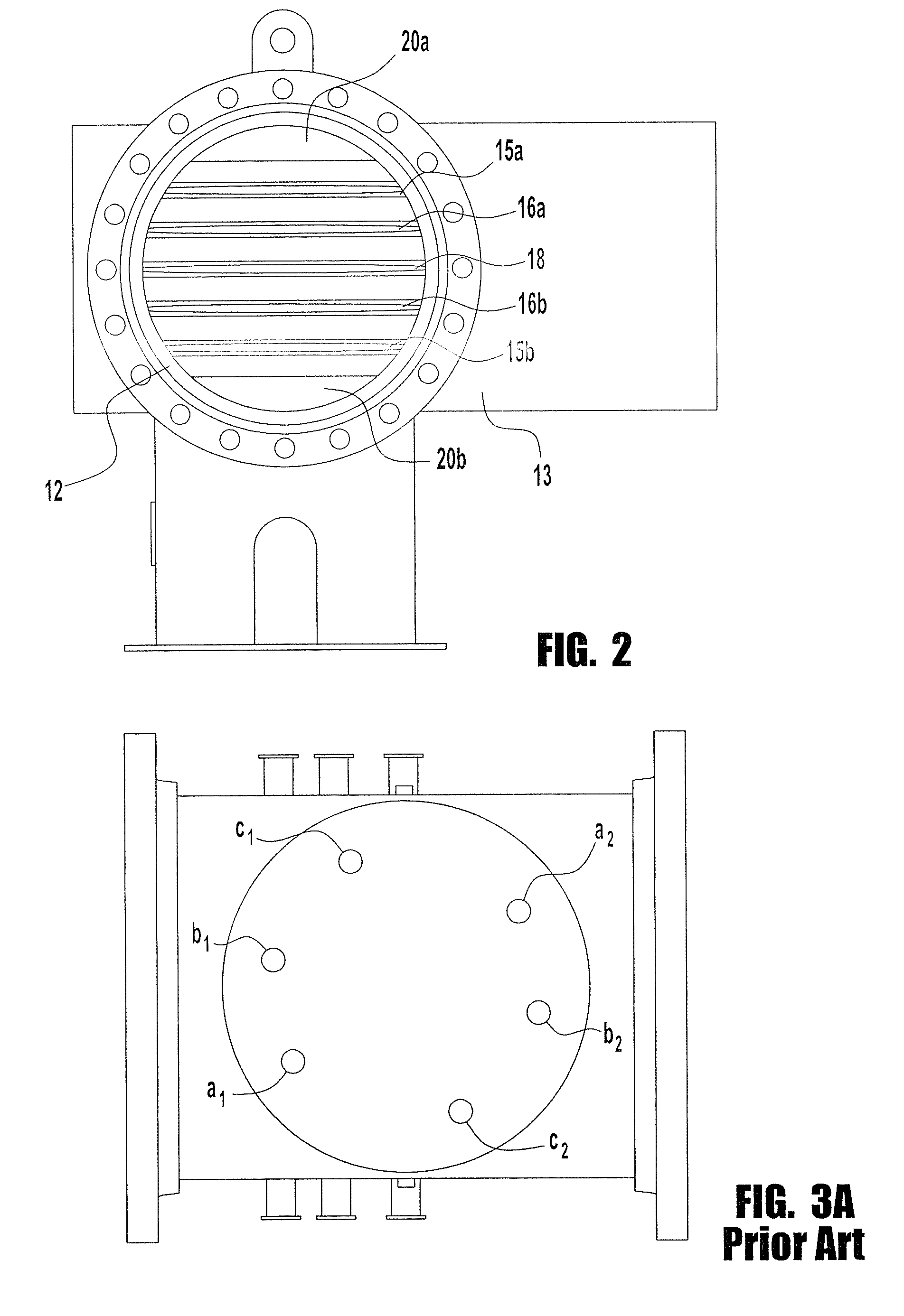UV treatment reactor
a technology of uv treatment reactor and reactor, which is applied in the direction of material analysis using wave/particle radiation, chemistry apparatus and processes, instruments, etc., can solve the problems of high dose, high headloss, and needing more lamps, even of lower power
- Summary
- Abstract
- Description
- Claims
- Application Information
AI Technical Summary
Benefits of technology
Problems solved by technology
Method used
Image
Examples
example 1
[0034]A reactor with a typical circular array was modified for comparison with an embodiment of the present invention. Such reactors require at least six or more lamps. For purposes of comparison with the present invention, a reactor having a “circular array” was prepared to contain a UV lamp geometry using only five lamps as illustrated in FIG. 3b. In this array of lamps, b1 and b2 are positioned downstream of UV sources a1 and a2 to effect an essentially circular array as compared to a five lamp reactor in the chevron array as embodied in FIG. 5. The span between the lamp pairs was maintained. Computational Fluid Dynamic (CFD) modeling combined with fluence field modeling was used to determine the performance of this reactor when operating with five lamps and with four lamps. Similar tests were conducted on an embodiment of the present invention using five lamps arranged in a chevron pattern as shown in FIG. 5. The results were compared and are summarized in Table 1 below.
[0035]
TA...
example 2
[0038]In an example of the invention, reactor 10 with five UV lamps arranged in a substantially chevron configuration according to this invention was modeled using Computational Fluid Dynamic Modeling to predict performance. The results are summarized in Table 2.
[0039]
TABLE 2Flow, MGD10.8.6.4.2.UV Transmittance, %8790909295No of Lamps operating54321Dose required, mJ / cm24040404040Actual Dose (CFD44.446.648.946.546.7Modeling) at 10 kW / lampLamp power to achieve 409.38.78.48.58.9Dose (CFD Modeling), kW
[0040]With five lamps operating at 10 million gallons per day (MGD) flow and a UV transmittance of 87%, a dose of 44.4 mJ / cm2 is achieved. The lamps can be turned down to 9.3 kW / lamp to achieve the required 40 mJ / cm2 dose. Alternate lamps were turned off, one lamp or pair of lamps at a time, to demonstrate turndown efficacy. First, the front lamp 18 was turned off to provide four operating lamps. These lamps were sufficient in the situation at a flow rate of 8 MGD and UV transmittance of 9...
PUM
| Property | Measurement | Unit |
|---|---|---|
| angle | aaaaa | aaaaa |
| angle | aaaaa | aaaaa |
| angle | aaaaa | aaaaa |
Abstract
Description
Claims
Application Information
 Login to View More
Login to View More - R&D
- Intellectual Property
- Life Sciences
- Materials
- Tech Scout
- Unparalleled Data Quality
- Higher Quality Content
- 60% Fewer Hallucinations
Browse by: Latest US Patents, China's latest patents, Technical Efficacy Thesaurus, Application Domain, Technology Topic, Popular Technical Reports.
© 2025 PatSnap. All rights reserved.Legal|Privacy policy|Modern Slavery Act Transparency Statement|Sitemap|About US| Contact US: help@patsnap.com



